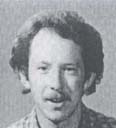Donald Freeman
(1977-80)

As a relatively new teacher, LIOJ was a great place to be. People were really engaged in their teaching; working at all hours in the crowded communal space of the Teachers' Office, and drinking scotch and making toasted cheese sandwiches in the Teachers' Lounge. And the residential course students were amazing... young company men (and some women) who were part of Japan's internationalization in the late 1970's. There was a great deal of creativity in classes-with teachers trying new ideas and students playing along. It seemed that there was a sort of suspension of disbelief in which students would usually try just about anything (once). We were actively involved with innovative teaching methods of the time-the Silent Way and Community Language Learning. It was the era of the Bellcrest File (one of the first business videos by the BBC); Robert O'Neal's "The Man who Escaped" (which we listened to in the fifth floor Language Lab looking out on Odawara Castle and the Sagami Bay); and Lance Knowles' and Ruth Sasaki's Story Squares.
Professionally, the LIOJ of the late 1970's was really a hub of English language teaching in Japan at the time. Two young teachers groups-the Kanto and the Kansai Associations of Language Teachers-had each started in their respective regions a few years before. Bill Harshbarger, along with Tom Pendergast from Osaka, had engineered a joint meeting at Asia Center, which led to the merging of the two groups into JALT (the Japan Association of Language Teachers). Cross Currents, the LIOJ journal, was coming into its own under Debbie Baker Matreyek, Howie Gutow, and Joyce Yukawa.
At the same time however, I remember LIOJ as being relatively disconnected from Japan. Programs were mainly residential for students, with only a small community program and children's classes taught by Gene Phillips. And while we teachers lived in Odawara, it was mainly in LIOJ-connected apartments: Who could forget stepping through the comatose fans around the Bicycle Race Track (keirin-jo) en route home to Komine Aparto at the foot of Shiroyama adjacent to the track? Looking back though, I think this separation may have served a purpose. The LIOJ of that era was not a place to stay; it was conceived as a place to come, teach, contribute, learn, and move on. Inherent in that transience was a certain tension, but also a momentum and creativity that were infectious.
LIOJ has stayed with me in a lot of ways. There are friendships-professional and persona-that endure. In a wider sense, LIOJ provided a foundation for my career in TESOL. As a teacher, I learned to experiment a lot and take risks. As Academic Supervisor, I learned there about working with people, about observing teachers and about building curricula. As a professional, I learned about presenting ideas through the Summer Teachers Workshop and through the burgeoning opportunities of the JALT of that era. But perhaps most of all, LIOJ has stayed as a memory of place in which people were highly engaged in what they were doing. I realize that that quality of engagement is a value I have sought (and found) in most workplaces since then.
March 2003
Top |
Copyright (c) Language Institute of Japan (LIOJ) / 日本外語教育研究所 |  Back Back |